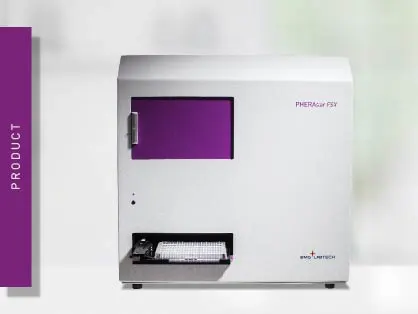
PHERAstar FSX
Powerful and most sensitive HTS plate reader


Understanding the cellular signals of drugs is essential to develop better drugs. Explore the benefits of studying opioid, cannabinoid, terpenoid, and serotonin receptor agonists.

Dr Marina Junqueira Santiago is a Senior Lecturer at the Macquarie Medical School, Sydney, Australia. Her main research interests are opioids, cannabinoids, terpenoids, and 5HT receptor agonists. Here, she discusses the potential benefits of this research for drug discovery and development, particularly in improving therapeutic effects and reducing adverse effects.
Your lab focuses on the molecular pharmacology and intracellular signalling of opioids, cannabinoids, terpenoids and 5HT receptor agonists. What is your main research interest?
My main research interest is understanding how drugs signal at the molecular level by looking at the activation/inhibition of multiple cellular pathways. I am also interested in how polymorphisms of the drug target and other related proteins can affect signalling. Understanding the cellular signal of drugs is an essential part of the puzzle to developing better drugs where we obtain the desired effect with fewer adverse events.
How can drug discovery and development profit from research on your drugs of interest?
If we take the example of cannabinoids, currently, most drugs available to treat medical conditions are based on phytocannabinoids. By researching synthetic cannabinoids, we can understand how these drugs activate different targets and identify a drug that is more selective towards the target(s) we wish to activate; thus, improving the therapeutic effect and decreasing adverse effects.
Medicinal cannabis is a multimillion-dollar market. These new synthetic drugs would be highly profitable if it takes a portion of this growing market. In addition, a better understanding of synthetic cannabinoids can support the development of treatments for synthetic cannabinoid-related intoxication, which is a public health concern.
What microplate reader requirements are needed to keep up with your research and screening necessities?
High-quality, reliable microplate readers are essential to the research we do. The microplate reader must be efficient, have a low background and be easy to use. We use fluorescence, absorbance and luminescence in our research.
We run BRET assays, such as the cAMP detection assay, using the CAMYEL biosensor. In this luminescence assay, two wavelengths are read to obtain data representing the changes in intracellular cAMP levels. Therefore, the plate reader must be able to quickly and accurately read both wavelengths.
You chose BMG LABTECH´s PHERAstar as a core screening instrument for your laboratory; what criteria did you use in your evaluation?
BMG LABTECH´s PHERAstar has simultaneous dual emission detection, which makes it possible to read the two wavelengths in the BRET assay efficiently. We also frequently test new assays and ways to look at different pathway activations. With the PHERAstar we can obtain new optic modules and upgrade the machine so new assays can be used.
In addition, we also have a CLARIOstar, which we have used frequently. The main advantage of the this is that we can choose different wavelengths without needing new modules – it is a great addition to the lab.
Marina Junqueira Santiago
After years of working as a community pharmacist, she came to Macquarie University for a PhD in Pharmacology, where she researched the effect of single nucleotide polymorphisms and phosphomutation of the mu-opioid receptor. After concluding her PhD, she worked for Prof Mark Connor and the Lambert Initiative for Cannabinoid Therapeutics. The project focused on creating platforms for the cell‑based elucidation of potential cannabinoid mechanisms of action in epilepsies. Today, she teaches pharmacology, research and professional practice; she continues researching the molecular pharmacology of cannabinoids, 5HT receptor agonists and opioids.
The interview was firstly published on drugtargetreview.com
Powerful and most sensitive HTS plate reader
Most flexible Plate Reader for Assay Development